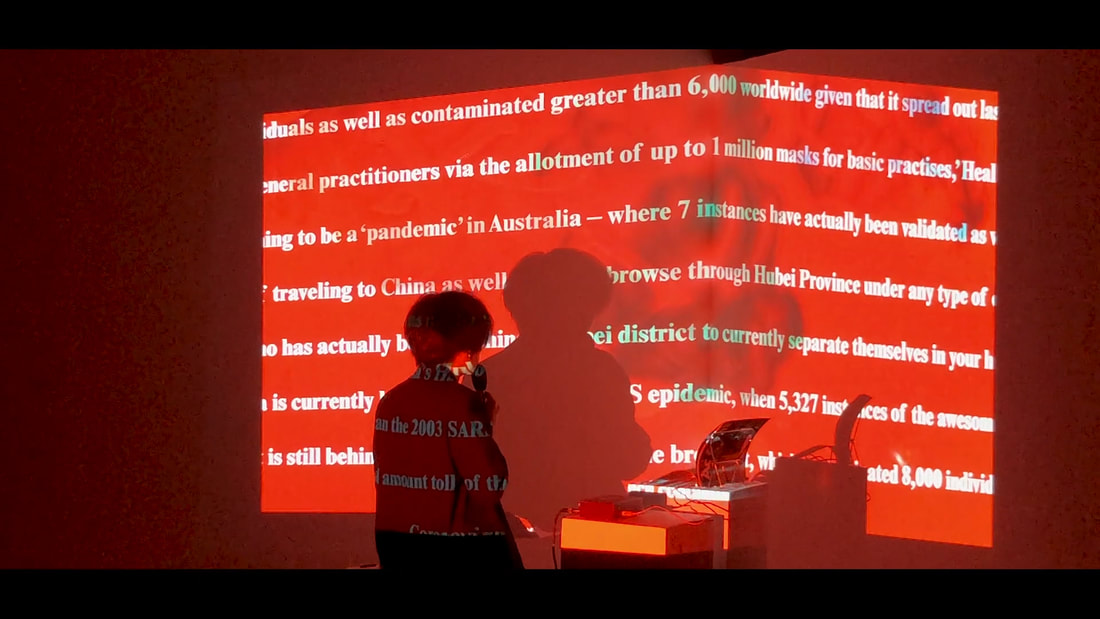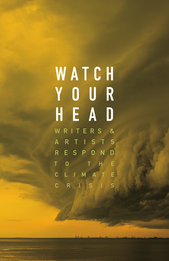|
1/31/2021 PERFORMANCE: JAMES LEGASPIchange Medium: performance documentation Duration: 10m19s April 2020 change is a 10-minute performance comprised of a single-channel video projected over a lone singer. The singer’s voice first delivers a rendition of Sam Cooke’s A Change Is Gonna Come through a vocoder, then moves into spoken poetry. By manipulating archived, found footage and combining it with its interactions between the body and voice, this performance confronts decolonization through an Asian-Canadian lens, notably putting the singer/speaker/artist directly into the environment being challenged. Created and performed at the wake of the pandemic, change’s main function is to respond directly to the xenophobia, Sinophobia, and unabashed racism that the current COVID-19 pandemic and biased mainstream media encourage. James Legaspi is an emerging Filipino-Canadian multimedia artist currently completing an undergraduate degree at the University of Toronto and Sheridan College, living and working in Brampton, Ontario. Recent activity includes work exhibited at the Art Museum at the University of Toronto and Gallery 44, curatorial work at the Blackwood Gallery, professional experience as a teaching assistant at Sheridan College, and participation in the most recent rendition of Visual Arts Mississauga’s Creative Residency.
1/10/2021 VIDEO POEM: EMILIE KNEIFELnote: this video was made in may 2017 by 2017-emilie, four months before emilie got sick. video transcription: the video is in portrait mode. finger-dragged words read bottom-to-top in grey sand that gets darker/wetter to the right. they say: “TIME IS RUNNING SHORT WITH MOST THINGS I FEEL LIKE THE TIDE RISES TOO FAST.” after six seconds, a wave takes most of them. the words left: “SHORT THINGS FEEL LIKE THE FAST,” or, almost, “SHORT THINGS FEEL LIKE THE PAST.” em/ilie kneifel is a poet/critic, editor at The Puritan/Theta Wave, creator of CATCH/PLAYD8s, and also a list. find 'em at emiliekneifel.com, @emiliekneifel, and in Tiohtiá:ke, hopping and hoping.
3/7/2020 VIDEO: CHOE RAYUNPlastic Wind 2019.12.11. 판교낙생대공원 / at the Pangyo Paradise Park, Seoul, Korea 두터운 잎 Project/ part of Thick Leaf Project As time goes as humans love the city forest, the forest loses herself and morphs with our habit. Her power and beauty are destroyed by our impatient and insignificant acts. We think the forest will remain the same, but she loses her language every time we walk through her path. The beautiful path for us is a plastic wind for her. - How do we express love? 사람이 도심의 숲을 사랑하는 시간이 흐를수록 작은 숲은 자신을 잃고 사람에 맞춰 변해간다. 숲은 그 자체로 힘이 있고 아름답지만, 사람이 만든 성급하고 작은 사건들에 무너져버린다. 숲은 계속 그대로일 거라고 생각하지만, 사람들이 한발자국 걸을 때마다 숲은 빠르게 숲의 언어를 잃어간다. 사람의 아름다운 산책길이 숲에게는 플라스틱 바람인 걸 모른다. -사랑의 표현은 어떻게 해야 하나 CHOE Rayun is a visual artist who works closely with elements from everyday and nature. She is an active member of Mullae Art Village in Seoul. Site-specificity of Mullae informs her work and directs her attention to nature, human and urban, and their relationship to each other. With her thought provoking works, she offers a moment to share and an opportunity to contemplate. She works in diverse mediums such as painting, drawing, sculpture, video and performance.
https://blog.naver.com/canero |
|
ISSN 2563-0067 © Copyright 2023 | Watch Your Head Contributors Sign up for our Newsletter Buy our print anthology Watch Your Head: Writers & Artists Respond to the Climate Crisis (Coach House Books, 2020). |

